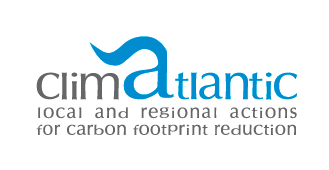NEWS & EVENTS : GENERAL INFORMATION

On track to reach the Kyoto target, 2008-2012
11.04.2011
The European Commission has published its annual report on the EU's progress towards meeting its Kyoto Protocol* target for reducing greenhouse gas emissions.
climatlantic //
These reports highlight the substantial progress the EU is making in breaking the link between carbon emissions and economic growth. In 2009, total EU-27 greenhouse gas (GHG) emissions were 17.4% lower compared 1990. By 2010 the EU succeeded in cutting emissions by 15.5% since 1990 while the economy grew by 41% over the same period. Emissions fell for six consecutive years up to and including 2009.
The EU-15 remains firmly on course to meet its 8% emission reduction target under the Kyoto Protocol, and is most likely to overachieve it. The EU-27 2010 emissions are approximately 15.5% below the 1990 level.
In most of the twelve Member States which acceded the Union as from 2004, emissions are projected to slightly increase between 2009 and 2012. However, nine of them that have a
Kyoto target are projected to meet or over-achieve their commitments using only the existing policies and measures.
New measures to reach the Unionís ambitious 2020 target are leaded by the Climate package adopted in 2009 which provides an integrated and ambitious package of policies and measures to tackle climate change until 2020 and beyond. From 2013 onwards the total Unionís effort to reduce greenhouse gas emissions by 20% by 2020 compared to 1990.
As noted in the Commissionís Annual Growth Survey 2011, in the field of climate mitigation the existing and planned measures are not yet sufficient to reach the 2020 headline targets.
By sectors, transport is the most important sector accounting for 80% of total Unionís emissions in 2009. Transport is responsible for 22% of total GHG emissions, agriculture for 10%, industrial processes for 7% and waste have been partially offset by significant increases in the transport sector.
In the Kyoto commitment period, total EU-27 GHG emissions are projected to be about 17.9% below base-year levels. This estimate is based on Member States projections and takes into account existing policies and measures. The projected decline is even bigger when the effect of acquisitions of credits via the Kyoto mechanisms by governments, carbon sinks and additional measures are counted for.
Across the EU -27, an assessment of Member Statesí policies and measures identified eight Common and Coordinated Policies and Measures (CCPMs) that are projected to deliver significant GHG emissions savings in the Union. The largest savings can be expected from the EU Emissions Trading System (ETS) Directive (2003/87/EC)** as revised and the Renewable Energy Directive sector, the fuel quality legislation and reduction of CO2 from cars are of significant importance. Further, energy demand will be reduced through the implementation of the Directives on the energy performance of buildings, eco-design requirements, energy taxation and the promotion of co-generation (combined heat and power). Finally, use of the Kyoto Protocolís flexible mechanisms is projected to deliver significant GHG emissions savings.
Since the adoption of the climate and energy package, work on implementation measures is ongoing. Before the end of 2012, about twenty new legal acts and documents have to be in place in order to ensure proper functioning of the EU ETS as revised as well as to prepare the ground for the implementation of national GHG emission targets in the non-ETS sectors.
Despite the positive trends towards KP commitment achievement shown by 2008-2012 projections, more effort and additional policies will be necessary to achieve the Unionís 2020 objectives. In this context, in the European Council celebrated last 23th October, it was discussed the preparations for the Durban conference on climate change, stressing the need to take ambitious steps towards a global and comprehensive legally-binding framework for the post-2012 period.
*The Kyoto Protocol is aimed to reduce greenhouse gas emissions in all participant countries
http://unfccc.int/kyoto_protocol/items/3145.php
**The EU Emissions Trading System (EU ETS) is a cornerstone of the European Union's policy to combat climate change and its key tool for reducing industrial greenhouse gas emissions cost-effectively. Being the first and biggest international scheme for the trading of greenhouse gas emission allowances, the EU ETS covers some 11,000 power stations and industrial plants in 30 countries.
http://eur-lex.europa.eu/LexUriServ/LexUriServ.do?uri=CELEX:32003L0087:EN:NOT
http://ec.europa.eu/clima/policies/eccp/index_en.htm








